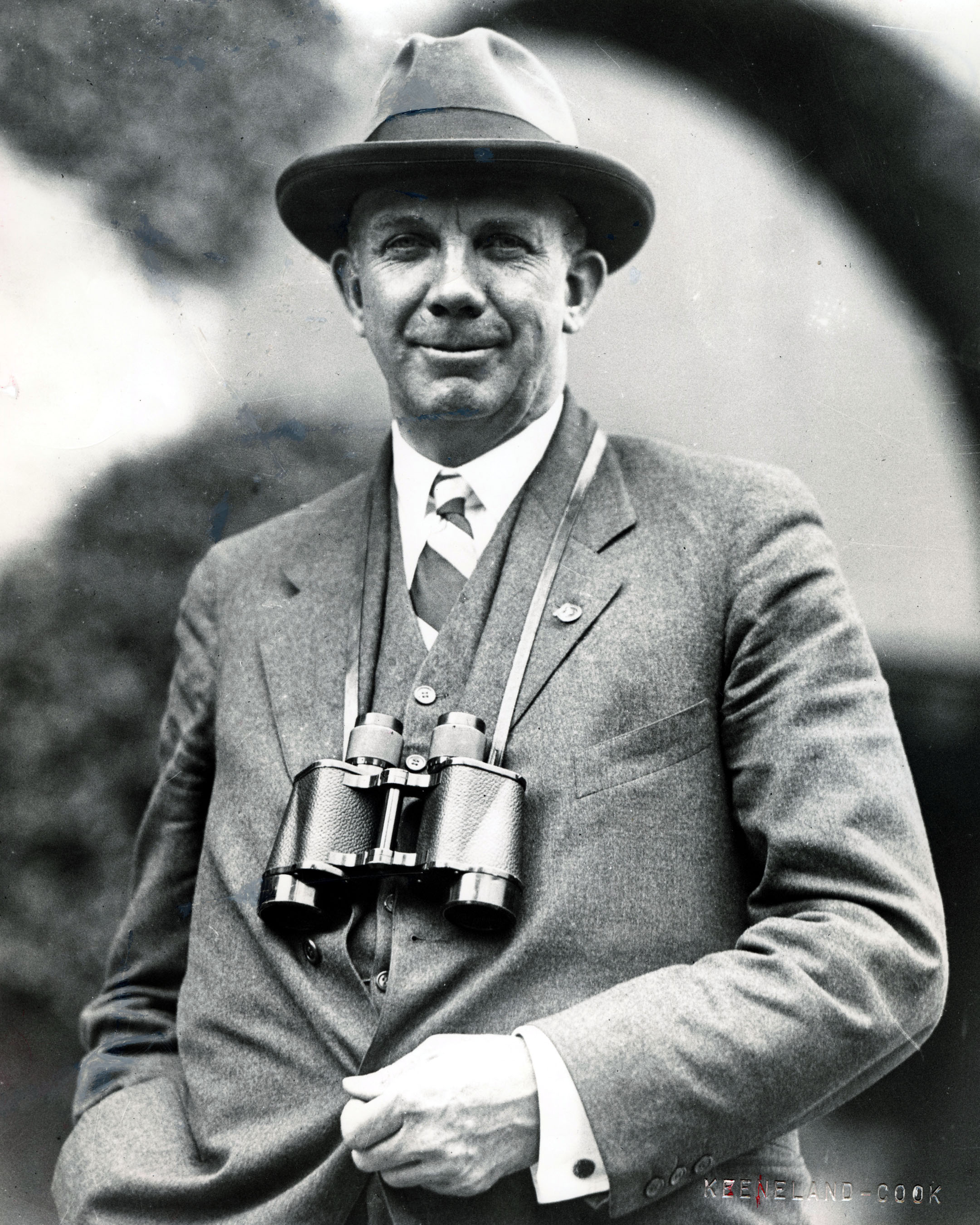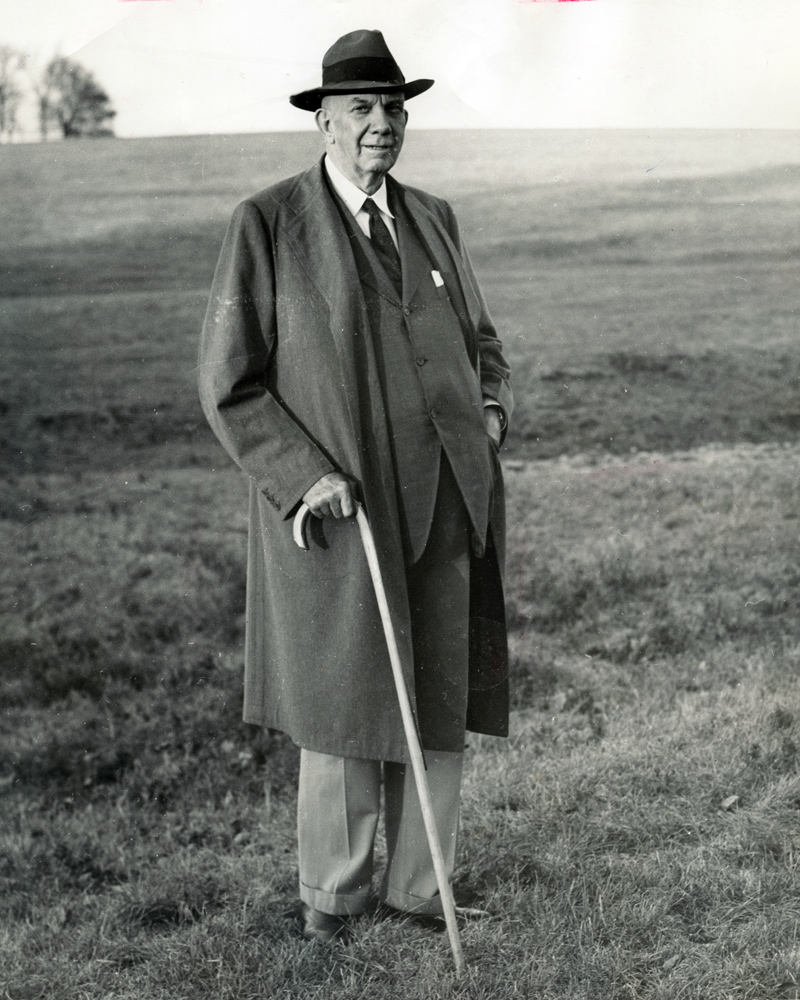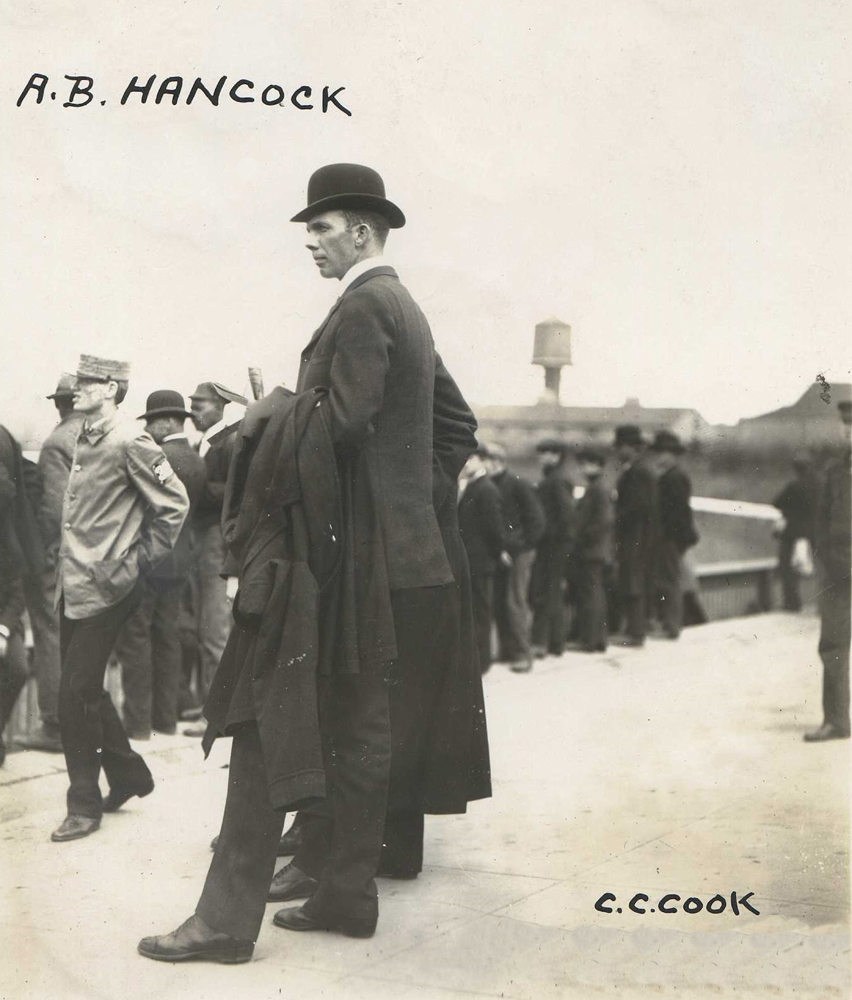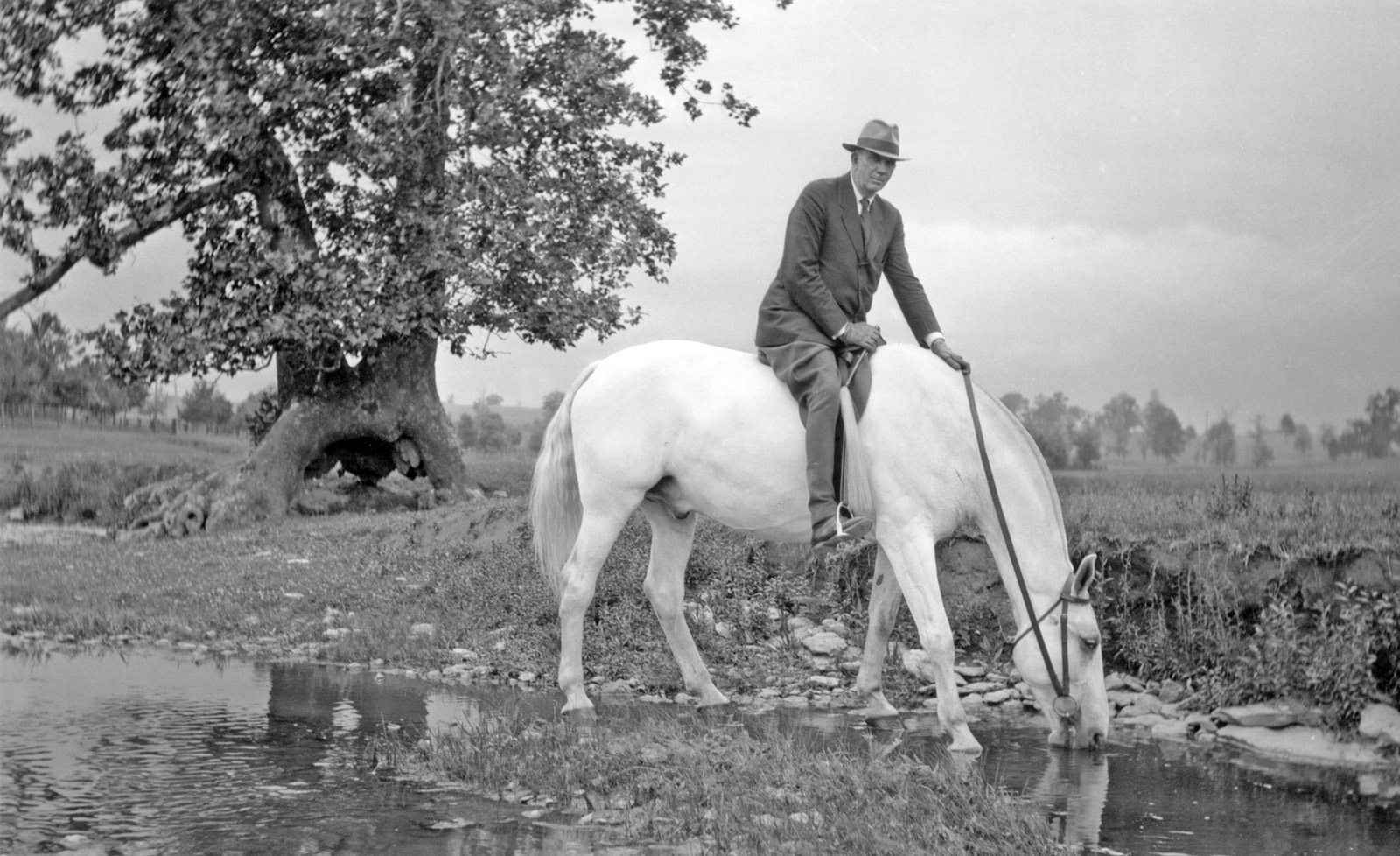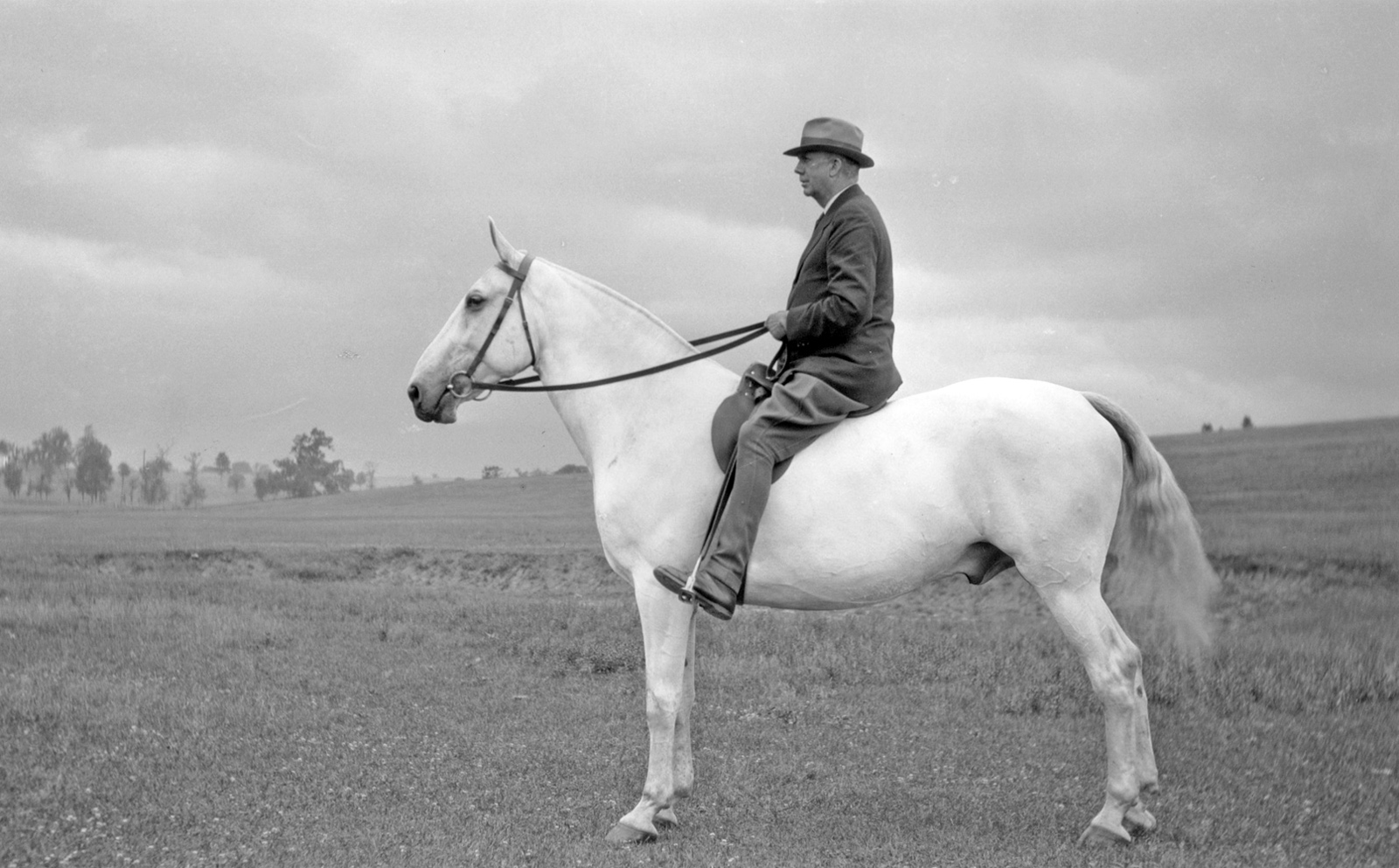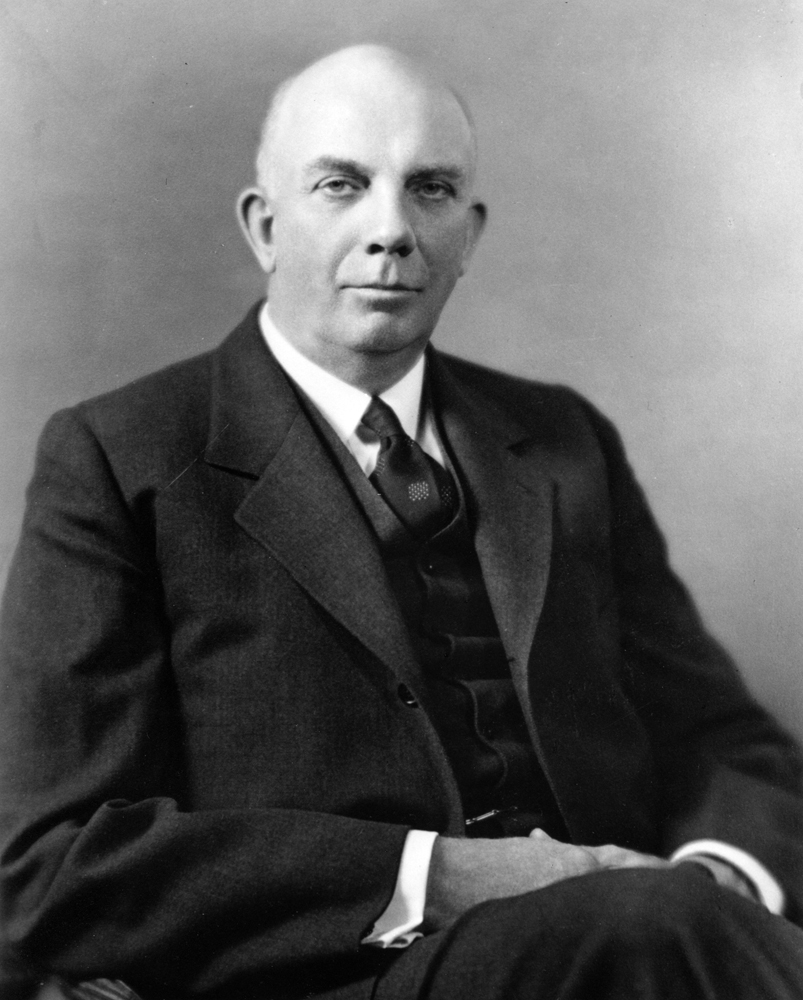Arthur B. Hancock, Sr.
There are many ways to illustrate the impact Arthur Boyd Hancock, Sr. had on thoroughbred breeding and racing. One is to recite the following: On two occasions, American Triple Crowns were won by colts in the first crops of stallions Hancock had imported, and in both cases, Hancock had sold the winners’ dams to the breeders of those immortals.
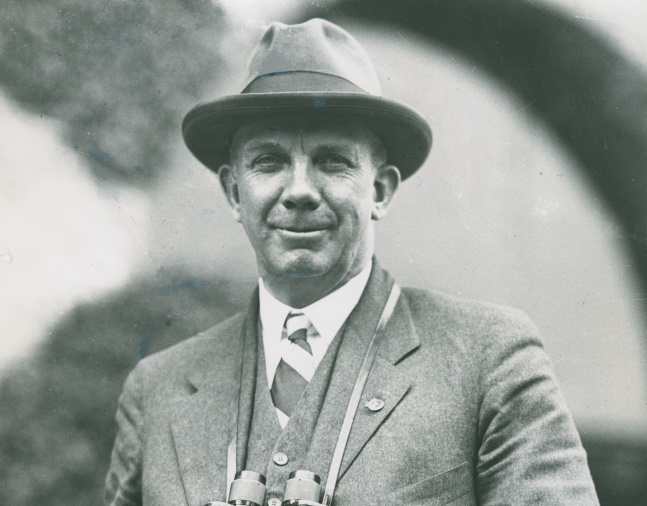
2018
June 26, 1875, Ellerslie, Virginia
April 1, 1957, Paris, Kentucky
Biography
There are many ways to illustrate the impact Arthur Boyd Hancock, Sr. had on thoroughbred breeding and racing. One is to recite the following: On two occasions, American Triple Crowns were won by colts in the first crops of stallions Hancock had imported, and in both cases, Hancock had sold the winners’ dams to the breeders of those immortals.
The Triple Crown winners were Belair Stud’s Gallant Fox and Calumet Farm’s Whirlaway. Belair’s owner, William Woodward, Sr., had been in the partnership Hancock put together to purchase Sir Gallahad III for $125,000 to import the horse to Hancock’s Claiborne Farm in Kentucky. Gallant Fox was out of Marguerite, which Woodward had purchased from Hancock’s Saratoga yearling consignment for $4,100. Gallant Fox won the Triple Crown of 1930.
Calumet Farm was rising under the guidance of Warren Wright, Sr. when Hancock put together another importation, and Wright was an investor in the deal that brought Epsom Derby winner Blenheim II to Claiborne in 1936. Hancock had sold the mare Dustwhirl to Wright, who bred her to Blenheim II as one of the stallion’s first book of American mares. The resulting foal was 1941 Triple Crown winner Whirlaway.
Other measures of Hancock’s impact on racing and breeding were evident in honors and statistical prowess, as Hancock was America’s leading breeder in earnings five times and leading breeder in wins eight times. He bred an impressive 10 champions among a total of 138 stakes winners.
The history of the Hancocks of Claiborne Farm has become an oft-told tale stretching more than 150 years. As war stories go, Capt. Richard Hancock’s was one of the less grim ones. It began poorly enough with his having been wounded a third time while serving with Gen. Stonewall Jackson. After the third injury, Capt. Hancock was taken in by the Harris family of Virginia. Capt. Hancock found more than recuperation, as in time he wed one of the family who cared for him, Thomasia Overton Harris.
Capt. Hancock later launched into a life of breeding horses at his in-laws’ Ellerslie in Virginia, and in due course one of his sons, Arthur B. Hancock Sr., followed suit. Born on June 16, 1875 in Ellerslie, Arthur also followed suit in taking as his wife a lady of property. In this case, she was Nancy Tucker Clay, who two years after their 1908 marriage inherited 1,300 acres in Kentucky. This became the core of what the Hancocks named Claiborne Farm, which eventually prompted the sale of Ellerslie to enable concentration on breeding sale yearlings and other bloodstock in one location.
Claiborne developed into a massive commercial operation and Hancock became one of the Kentucky horsemen who developed a Bluegrass connection to the yearling sales at Saratoga. Claiborne was a leading consignor for many years, but when World War II threatened restrictions on rail transport, Hancock recognized the need for an alternative plan. He thus was instrumental in the creation of the Breeders Sales Company in Central Kentucky. Breeders Sales was eventually folded into the Keeneland Association, whose sale division went on to become a worldwide leader.
Hancock was also active in numerous organizations within the racing industry, serving as president of the Thoroughbred Horse Association, trustee of the Keeneland Association upon its formation in 1936 and executive on the Kentucky State Racing Commission, among others. He was the Thoroughbred Club of America’s Honored Guest in 1944.
Arthur B. Hancock, Sr. was succeeded at Claiborne by his son, A. B. “Bull” Hancock, Jr., also a Pillar of the Turf. Bull Hancock was followed by his children Seth, Dell, and Clay Hancock at Claiborne, while Arthur Hancock III branched out separately at Stone Farm. Claiborne has continued as one of the sport’s most successful breeding operations, turning out major stakes winners for themselves and many clients.
After Arthur Boyd Hancock, Sr. passed away in 1957, the noted international Bloodstock Breeders’ Review hailed him as “probably the most influential breeder in the history of the American Turf.”
Achievements
North America's leading breeder in wins — 1935, 1936, 1937, 1938, 1940, 1942, 1943, 1944
North America's leading breeder in earnings — 1935, 1936, 1937, 1939, 1943
Other Highlights
Bred 138 stakes winners, including 10 champions
Media
